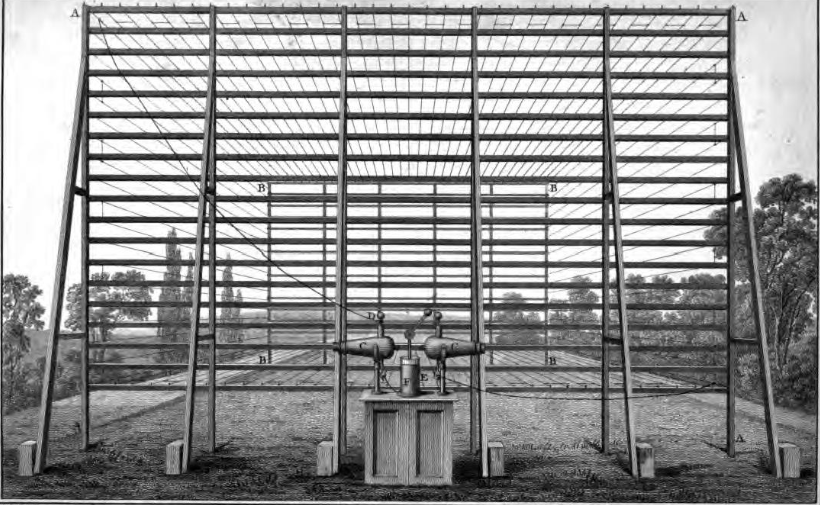It takes a long time between inception and application. What I mean is that a process or machine that becomes ubiquitous and influential in one era often turns out to have been invented years or decades earlier — often so long back that the original inventor is relatively forgotten in favor of the popularizer of a later version of the same thing.
This is exactly what happened with the electric telegraph. When you’re talking about telegraphs, by the way, it’s important to specify electric because historically there have been several other long-distance signaling systems that were completely different. But electric telegraphs began to be put to practical use in the 1840s. The first system put to commercial use was the Cooke and Wheatstone telegraph, invented in 1837 by (as you’ve guessed), Cooke and Wheatstone. It wasn’t at all like today’s popular image of telegraphs as machines producing clicks and operators pressing a key The Cooke and Wheatstone system used needles that swayed back and forth. There were versions that used as many as five needles. The system with the key and the dots and dashes was the Samuel Morse version, from just the next year, 1838. The Cooke and Wheatstone system, though, remained in use as late as the 1930s.
But none of those folks invented the electrical telegraph; they just refined an idea that had been invented all the way back in 1816 by Francis Ronalds. And very few people have heard of him. He was born February 21, 1788 in London, and started experimenting with electricity when he was just ten years old. By his twenties he was publishing scientific papers in the Philosophical Magazine, describing a type of battery he’d developed, as well as an electric clock he invented. He also invented new types of electrical insulation, was the first to describe electric induction, and began creating the “Ronalds Library” of books about electricity, organized with a card catalog also of his own invention (it may have been the world’s first card catalog, too).
He proved that electrical signals could travel long distances by building a working telegraph system in his mother’s back garden — and by “long distances” I mean that he strung eight miles of wire to test it. His mother didn’t have a gigantic garden; he looped the wire around and around a frame. He presented his system to the British Admiralty, only to have the Secretary, Sir John Barrow, scoff at it as “wholly unnecessary.”
Ronalds apparently just shrugged and went on inventing, turning to surveying instruments, a sort of precursor system to moving pictures, and “electrographs,” which record various aspects of weather automatically. He built his electrographs at the Kew Observatory, which he founded. In his later years he invented various forms of electric lighting as well as designing electrical propulsion systems for ships that formed the basis for rudder-and-propeller mechanisms still in use today. Ronalds never spent time publicizing or promoting his work, but he was knighted when he was 82 in recognition of his achievements. There is at least one road named for him, as well as Ronalds Point, somewhere in Antarctica. And he was belatedly recognized as the “father of electric telegraphy” by the Society of Telegraph Engineers.

Francis Ronalds’ eight-miles-of-wire framework.
